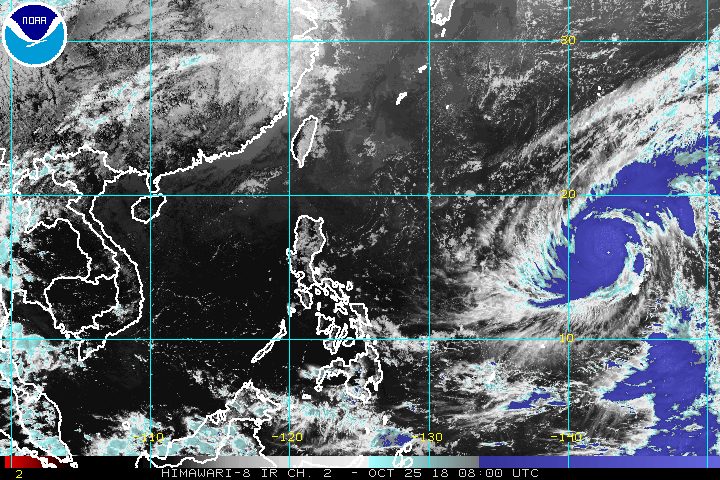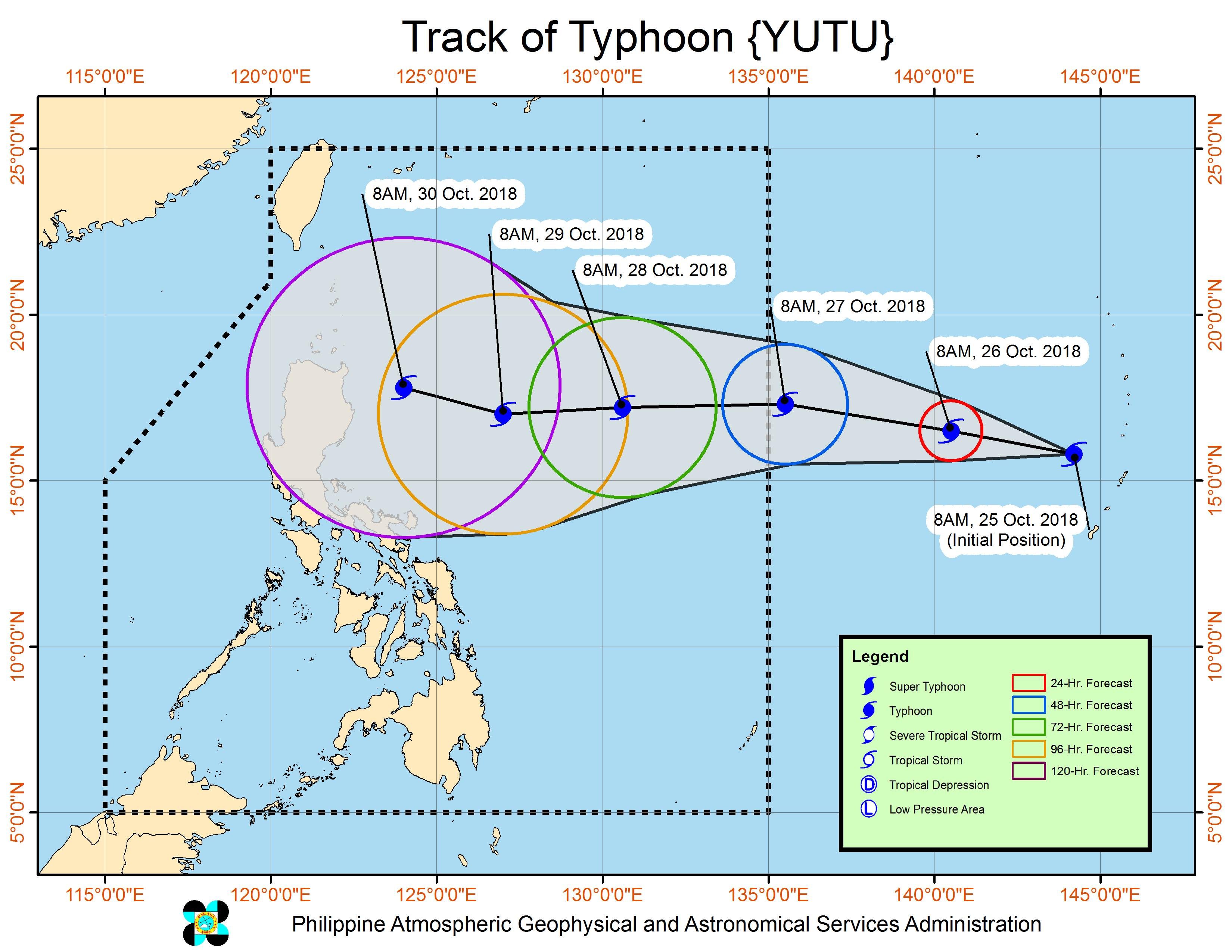SUMMARY
This is AI generated summarization, which may have errors. For context, always refer to the full article.

What’s the weather like in your area? Report the situation through Rappler’s Agos or tweet us at @rapplerdotcom.
MANILA, Philippines – Typhoon Yutu, which is heading for the Philippine Area of Responsibility (PAR), could affect Northern Luzon next week.
In a bulletin released 5 pm on Thursday, October 25, the Philippine Atmospheric, Geophysical, and Astronomical Services Administration (PAGASA) said Yutu is now 2,230 kilometers east of Central Luzon, still moving west northwest at 20 kilometers per hour (km/h).
If it maintains its speed, Yutu could enter PAR on Saturday morning, October 27. When it enters, it will be given the local name Rosita. (READ: LIST: PAGASA’s names for tropical cyclones in 2018)

At the moment, Yutu has maximum winds of 210 km/h and gustiness of up to 260 km/h.
PAGASA does not yet classify it as a super typhoon, which must have maximum winds exceeding 220 km/h. (READ: FAST FACTS: Tropical cyclones, rainfall advisories)
PAGASA said tropical cyclone warning signals may be raised as early as Monday morning, October 29, in the Isabela and Cagayan area.
More detailed forecasts are expected as the typhoon nears or enters PAR.
So far, the Philippines has had 17 tropical cyclones in 2018. The country usually gets an average of 20 tropical cyclones per year.
Meanwhile, the northeasterly surface windflow or winds coming from the east will affect Northern Luzon on Friday, October 26.
Isolated rainshowers are expected in the Ilocos Region, Cordillera Administrative Region, and Cagayan Valley on Friday.
The rest of the country will also have localized thunderstorms, mostly in the afternoon or evening. Flash floods and landslides are possible if the thunderstorms bring heavy rain.
PAGASA declared the start of the rainy season last June 8. – Rappler.com
Add a comment
How does this make you feel?
There are no comments yet. Add your comment to start the conversation.